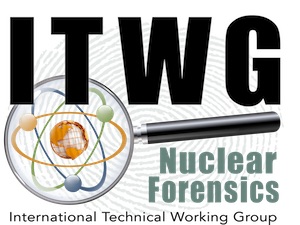INFL Guideline for alpha spectrometry
Alpha Spectrometry is used for isotopic composition measurement of radioactive elements that decay by the emission of an alpha particle. These include many of the actinide elements (thorium, uranium, neptunium, plutonium, americium and curium) and some of the heavy elements (e.g. polonium and radium). The concentration of an isotope can be determined by using an isotope dilution technique (i.e. spiking the sample with a known quantity of a known isotopic composition). Separation and purification of the element of interest is required prior to analysis. The chemical processes are well developed and the equipment components for analysis are fairly inexpensive.
Download file
Guidelines for evidence collection in a radiological or nuclear contaminated crime scene
Effective response to the wide range of possible radiological incidents requires the development and implementation of a national response plan. This plan should describe the roles and responsibilities of the relevant national agencies involved in response to radiological incidents. Having such a plan in place in advance of an incident, as well as regularly exercising the plan, will facilitate an effect overall response to an actual incident.
Download file
In-field applications of high-resolution gamma spectrometry for analysis of special nuclear material
This document describes the use of gamma spectrometry in field conditions as a non-destructive tool for the characterization of nuclear material. In-field use of gamma spectrometry for nuclear security and nuclear forensics purposes provides a means to assess the threat posed by interdicted radioactive/nuclear (RN) material. This information can then be used to determine how the material can best be transported to a safe storage location or to a nuclear forensic laboratory for detailed analysis.
Download file
Laboratory applications of high-resolution gamma spectrometry for the analysis of special nuclear material
Laboratory applications of gamma spectrometry for nuclear security and nuclear forensics purposes provide a means to accurately determine the isotopic composition of gamma-emitting nuclides in a sample and to quantify the amount of each radioisotope present. In the analysis of special nuclear material, such as uranium and plutonium, gamma spectrometry may also be used to determine the total nuclear material content, the age of the material, the presence of reprocessed uranium, and the presence of fission products.
Download file
High-resolution gamma spectrometry - general overview
Gamma spectrometry is a non-destructive technique used to identify and quantify gamma-emitting radionuclides present in a given sample. Gamma spectrometry takes advantage of the characteristic gamma-ray energies emitted by each radionuclide and the proportionality between the intensity of the emitted radiation and the activity of the radionuclide in the sample being measured. A gamma spectrum displays the number of detected gamma photons as a function of energy.
Download file
INFL Guideline on powder X-Ray diffraction (XRD)
X-Ray Diffraction (XRD) is an analytical technique used to identify crystalline compounds. It is a bulk technique, though the volume of material sampled is relatively small (approximately 0.01 cm3). Specimens are typically examined in the form of powders or solid pieces. XRD analysis produces diffraction patterns which can be compared to large open databases of crystal diffraction patterns to give precise information about the crystal structure of the material examined.
Download file
INFL Guideline on secondary ion mass spectrometry (SIMS)
Secondary Ion Mass Spectrometry (SIMS) is used for elemental and isotopic analysis of solid samples. SIMS is a destructive technique, although the amount of sample consumed during analysis is usually quite small. The greatest strength of SIMS is the ability to analyze very small areas (as small as 50 nm using the NanoSIMS, for example) and to generate high-spatial resolution maps of the distribution of elements and isotopes in the sample. SIMS may also be applied for the analysis of individual micrometer sized particles.
Download file
INFL Guideline on thermal ionisation mass spectrometry (TIMS)
Thermal Ionisation Mass Spectrometry (TIMS) is used for isotopic composition measurement of elements having relatively low ionisation potentials (e.g. Sr, Pb, actinides and rare earth elements). Also the concentration of an element can be determined by TIMS using the isotope dilution technique by adding to the sample a known amount of a "spike". TIMS is a single element analysis technique, thus it is recommended to separate all other elements from the sample before the measurement as they may cause mass interferences or affect the ionisation behaviour of the element of interest.
Download file
INFL Guideline on age dating
Age dating (production date measurement or radiochronometry) of a radioactive/nuclear material in nuclear forensics refers to the time when the material was last chemically or physically purified or modified. The principle is based on the measurement of the radioactive progenies (decay products) relative to the parent nuclides, which serves as a chronometer for age dating. After the measurement of a progeny-to-parent ratio, the time of their last separation can be calculated based on the radioactive decay equations.
Download file
INFL Guideline on characteristic parameters of UO2 fuel pellets
Low enriched uranium dioxide (UO2) in form of ceramic pellets is typically used in commercial nuclear power reactors as fuel. In order to find out the intended use of UO2 pellets, and subsequently to narrow down the possible production facility, UO2 pellets contain a few characteristic parameters (i.e. signatures) that can be helpful in the origin determination. Such signatures include e.g. dimensions, 235U enrichment and impurities.
Download file
ITWG Guideline on elemental assay - PU titration
In this guide, plutonium (Pu) assay through titration refers to a methodology determining the Pu content in material where Pu is the major constituent. Pu assay through titration is a well-tested and well-understood method developed over the last 50 to 60 years as part of nuclear safeguards verification in di erent nations. Other Pu assay techniques commonly used across the nuclear industry include coulometric titration, spectrophotometry of Pu (III) or Pu (VI) and ignition gravimetry. These methods are described in separate ITWG guideline documents.
Download file
ITWG Guideline on elemental assay - U titration
In this guide, the assay of uranium through titration refers to a methodology determining the U content in material where U is the major constituent. U assay through titration is a well-tested and well-understood method developed over the last 50 to 60 years as part of nuclear safeguards verification in di erent nations. Other U assay techniques commonly used across the nuclear industry include ignition gravimetry and X-ray fluorescence.
Download file
Importance of uncertainty in nuclear forensics measurements
Uncertainty of measurement is the doubt that exists about the result of any measurement. An uncertainty is a quantitative estimate of the doubt associated with a measurement result. Although a measurement process attempts to determine the value of a chemical attribute or physical property, the actual measurement value is only an estimate of the true value. Measurement uncertainty characterizes the range of values within which the true value is asserted to lie, with a specified level of confidence.
Download file
Laser ablation inductively coupled plasma mass spectromety
Laser ablation is a solid sample introduction technique for analysis by atomic spectrometry.
In nuclear forensic applications, it is mainly used with inductively coupled plasma mass spectrometry – ICP-MS1. Any solid sample may be categorized and characterized rapidly (within few hours) with little or no sample preparation. A high energy laser is used to ablate the sample in a controlled manner. The resulting aerosol containing particles, vapor and agglomerates is introduced into the plasma by a suitable gas, where they are ionized, and then analyzed by a mass spectrometer. Surface analysis and depth profiles can be obtained to a depth of a few
μm.
Download file




